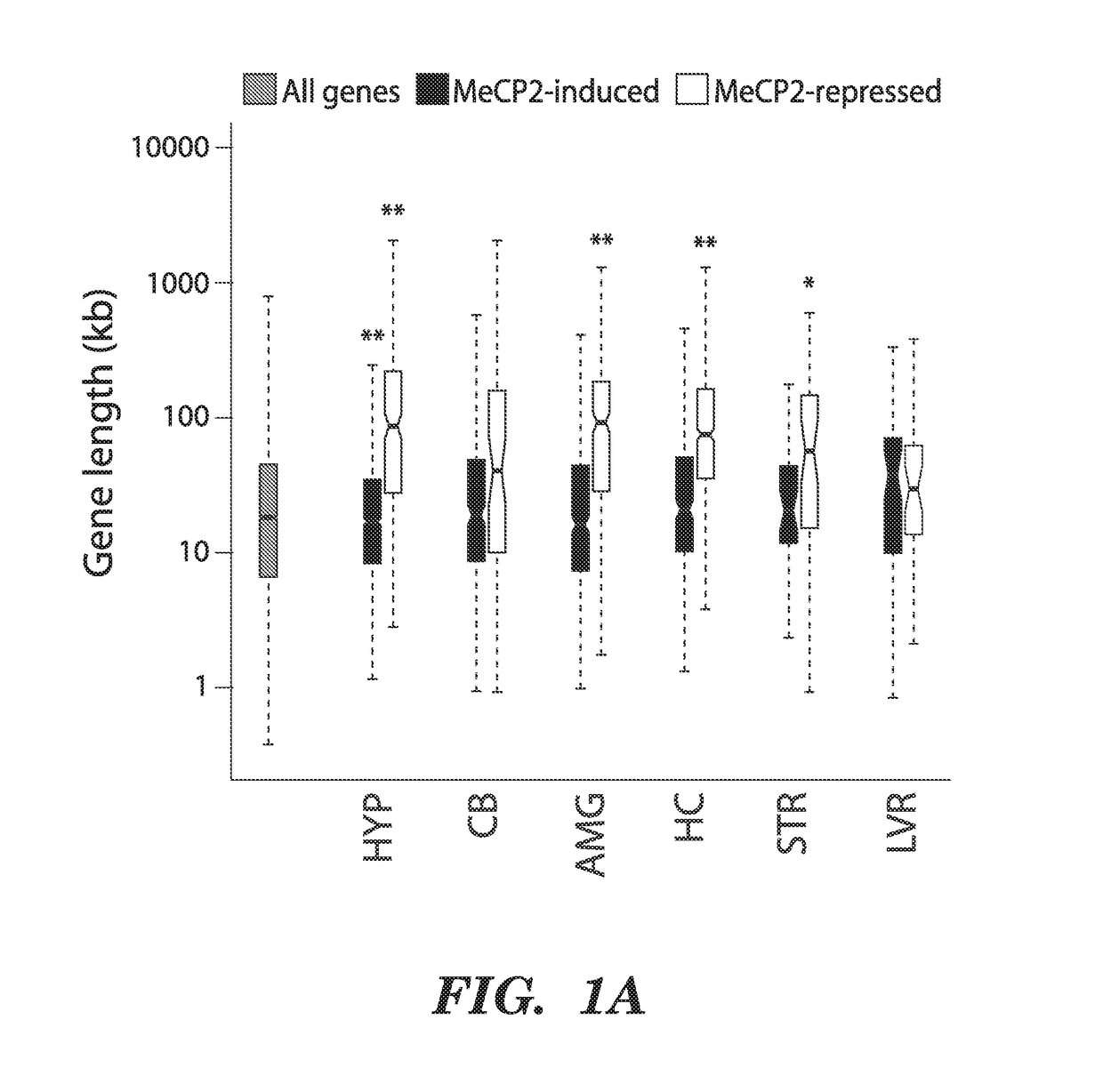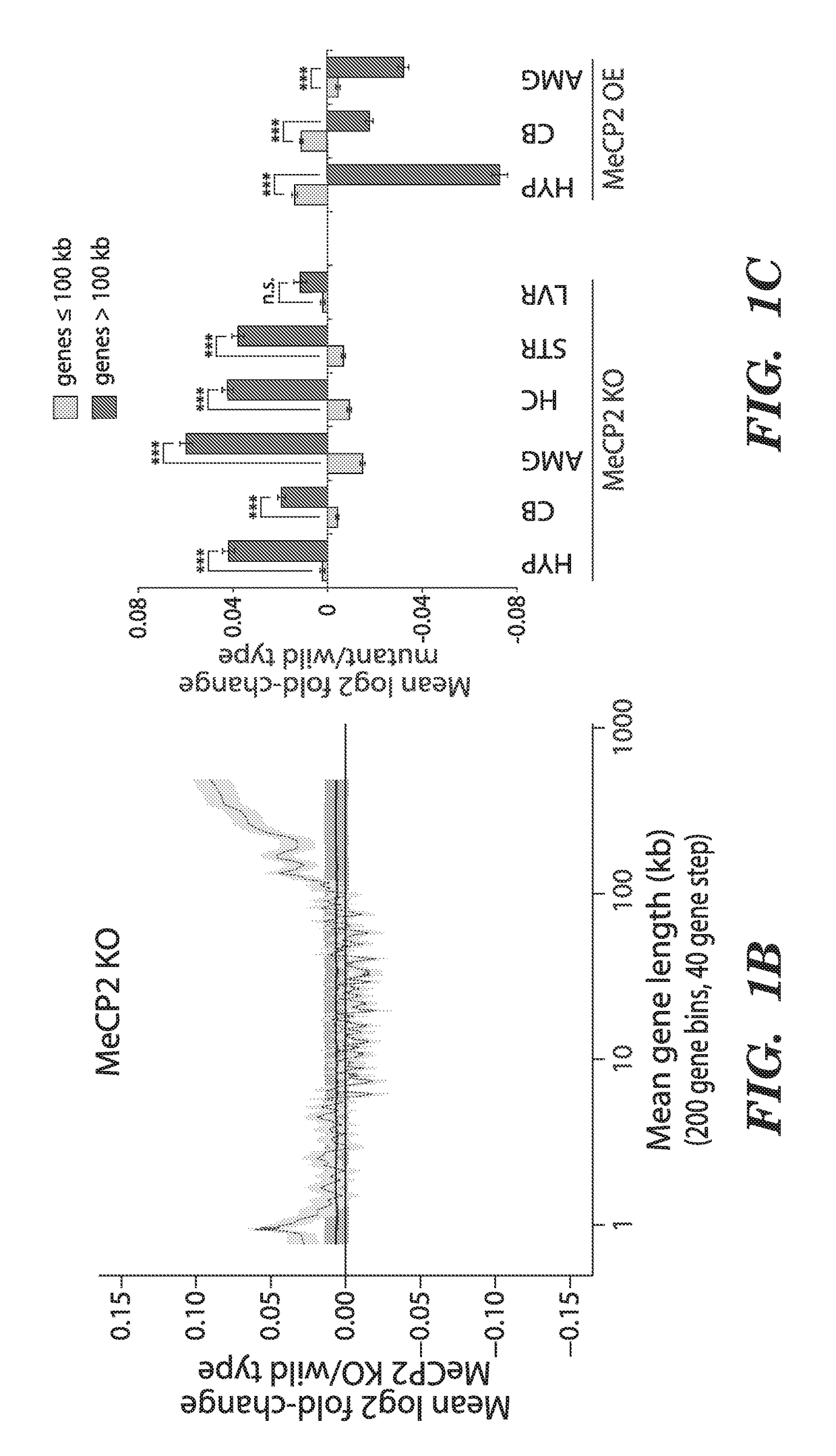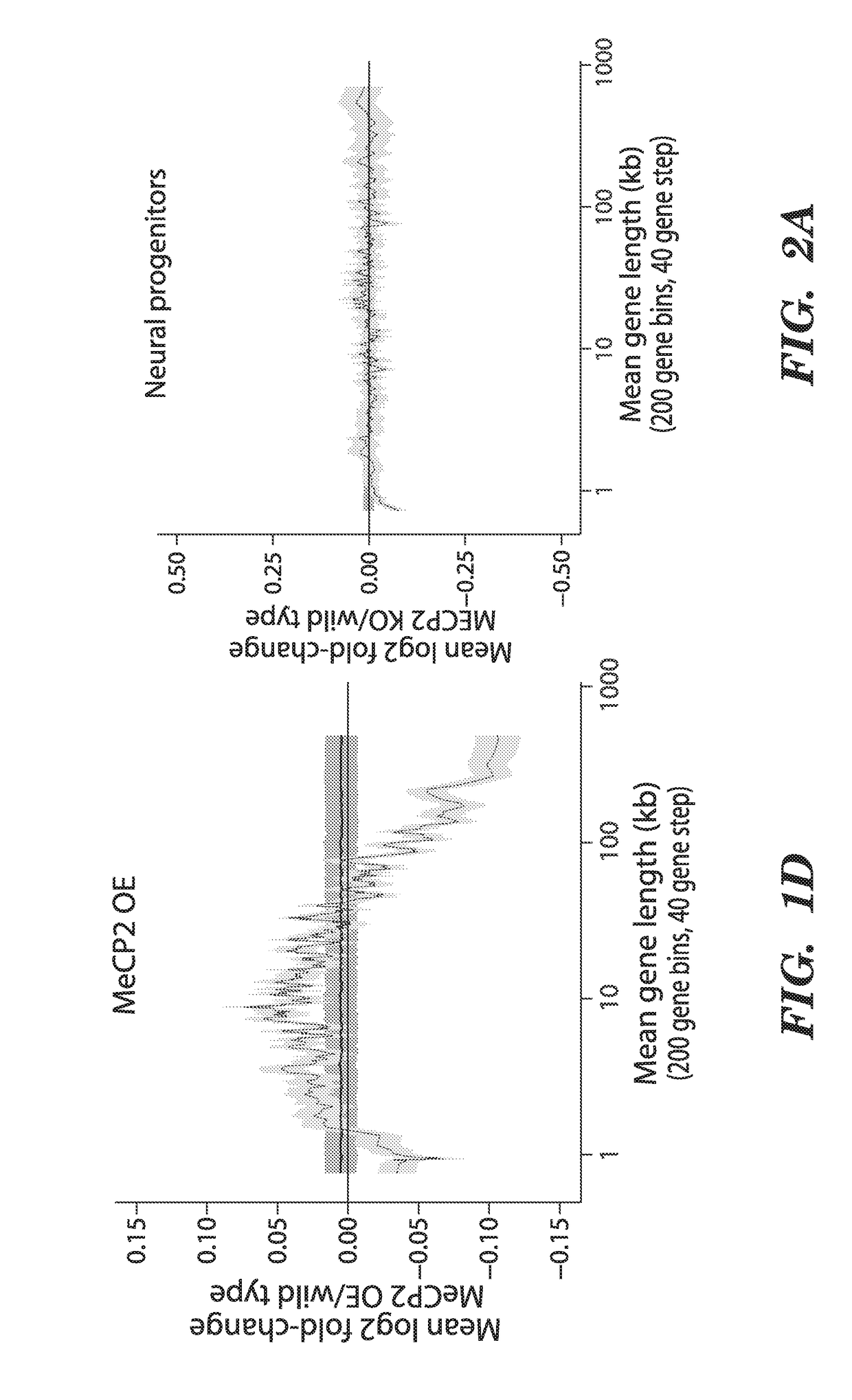Methods for treatment of autism spectrum disorders
a technology for autism spectrum disorders and treatment methods, applied in the field of autism spectrum disorders, can solve the problems of not well understood how mecp2 functions with dna methylation in vivo to regulate neuronal gene expression, and determine the effect of mecp2 on gene expression, and achieve the effect of increasing the expression of long genes
- Summary
- Abstract
- Description
- Claims
- Application Information
AI Technical Summary
Benefits of technology
Problems solved by technology
Method used
Image
Examples
example 1
pendent Gene Misregulation in Autism Spectrum Disorders
[0205]Gene Length-Dependent Misregulation in RTT Models
[0206]To search for features of chromatin biology or gene structure that are regulated by MeCP2, we asked if genes that are misregulated when MeCP2 function is disrupted have anything in common with respect to MeCP2 binding, DNA methylation, histone modifications, mRNA expression, sequence composition, or gene length. This analysis revealed that genes that are consistently up-regulated in the MeCP2 KO relative to wild-type brains are significantly longer than the genome-wide distribution of gene lengths (FIG. 1a). The extreme length of the genes that are up-regulated in MeCP2 KO brains is apparent in genesets from distinct brain regions in multiple studies performed by different laboratories5-9 (See FIG. 13 for details).
[0207]The long lengths of the genes that are up-regulated in the MeCP2 KO raised the possibility that gene length might directly correlate with the extent of...
example 2
[0333]To further test if MeCP2 tempers long gene transcription by binding to mCA within genes we asked if elimination of mCA in the brain has an effect on gene expression that is similar to that observed in the MeCP2 KO. Recent evidence suggests that Dnmt3a is the enzyme that catalyzes the deposition of mCA in maturing neurons21,25. We therefore conditionally disrupted the Dnmt3a gene11 in the brain to block the accumulation of mCA (Nestin-Cre; Dnmt3aflx / flx mice, designated Dnmt3a cKO, FIG. 17). Bisulfite sequencing of cerebellum DNA indicated that methylation of DNA at CA, but not CG, is eliminated from the genome in the Dnmt3a cKO (FIG. 22a). Microarray analysis of cerebella from Dnmt3a cKO mice revealed a length- and mCA-dependent up-regulation of gene expression that is similar to the gene misregulation detected in MeCP2 KO mice (FIGS. 19a to 19i, FIG. 22b). While the deletion of Dnmt3a also leads to a decrease in methylation at CT and CC, given that MeCP2 selectively binds to ...
example 3
MecP2 Binds mCA in the Brain
[0361]To examine if MeCP2 binds mCA in the brain, we performed chromatin immunoprecipitation sequencing analysis (ChIP-seq) of MeCP2, comparing the MeCP2 binding profile across the genome to base-pair resolution DNA methylation data (see Methods)25. As previously reported10,11, we find that MeCP2 binds broadly across the genome. Nevertheless, within the context of this broad binding, we detect a relative enrichment of MeCP2 at gene bodies that have a high level of mCA (level=(h)mCN / CN within the gene, see Methods), and a depletion of MeCP2 binding at gene bodies where the level of hmCG is high (FIG. 18a to 18d). Notably, long genes (>100 kb) display a strong relationship between mCA levels and MeCP2 ChIP-seq read density (FIG. 16a, FIG. 18a to 18d). Higher resolution analysis of MeCP2 ChIP and mCA levels in the frontal cortex revealed increased mCA under sites of local MeCP2 enrichment in the genome, supporting the conclusion that MeCP2 binds to mCA in vi...
PUM
 Login to View More
Login to View More Abstract
Description
Claims
Application Information
 Login to View More
Login to View More - R&D
- Intellectual Property
- Life Sciences
- Materials
- Tech Scout
- Unparalleled Data Quality
- Higher Quality Content
- 60% Fewer Hallucinations
Browse by: Latest US Patents, China's latest patents, Technical Efficacy Thesaurus, Application Domain, Technology Topic, Popular Technical Reports.
© 2025 PatSnap. All rights reserved.Legal|Privacy policy|Modern Slavery Act Transparency Statement|Sitemap|About US| Contact US: help@patsnap.com



